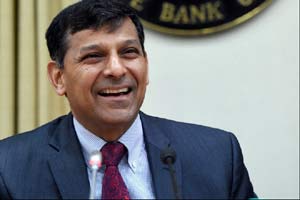Days ahead of the Budget, RBI governor Raghuram Rajan on Wednesday pitched for increasing the tax-exemption limit on financial investments for individuals from R1.5 lakh a year. In a call with analysts, Rajan also reiterated that inflation continued to be a concern.
Acknowledging that there was a R50,000 increase in the limit in the last Budget to R1.5 lakh a year, he said benefits of this instrument have been lost over time as the limit was anchored at R1 lakh for a long time. “Remember, the government increased the limit for tax benefit in savings by R50,000 in the last Budget. The question is — is there room for more, primarily because the real tax benefit has fallen over time because the limit was at R1 lakh for a long time. Maybe, what we have to do is increase that,” Rajan said.
On inflation, Rajan said it was easier for the central bank to fight it now, given that, globally, there was deflation and a general fall in commodity prices. “It is actually easier for us since we are not fighting inflation in an environment where inflation is picking up elsewhere,” he said.
Deputy governor HR Khan said the RBI was looking to revive retail inflation-linked bonds and was mulling new features to attract investors.
The central bank had recently launched consumer-price-index-based inflation indexed bonds (IIB) and asked banks to sell these to retail investors at various branches. Investments have totalled a measly R95 crore in these bonds in close to four months.
“We are holding talks with the government to improve the features to make it more attractive to retail investors. For institutional investors, we have suggested introduction of CPI-linked IIBs,” said Khan during the conference call.
The RBI launched IIBs linked to wholesale price index in early 2013 and was able to sell R6,000-7,000 crore worth of bonds. However, these bonds fell out of favour and are hardly traded in the secondary market now.
Six months after it introduced WPI-linked IIBs, the RBI launched CPI-linked IIBs for retail investors. Given the complexity of the bond, interest from retail investors was dismal.
Asked whether they would also look at WPI inflation when calculating real interest rates as the index reflects the pricing power of companies, deputy governor Urjit Patel said RBI would look at CPI for all purposes.
“From the RBI side, we are fairly settled that headline CPI is what we would use for policy and for calculating the real interest rate and this would be of the nominal policy rate. We are not going to confuse matters by talking about the WPI,” said Patel.
Patel said the RBI would also take into account employment situation once it had streamlined data. “We may have a series on quarterly unemployment from the second half of this calendar year and we would look at those numbers,” he said.
